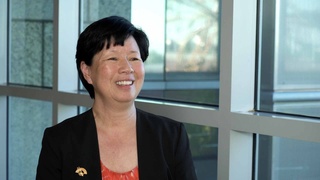Interviews
Bombing of Pearl Harbor
While we were talking, we saw the Japanese plane with the hinomaru, the “rising sun” insignia, and the American plane. And we thought, your Aunty thought it was a maneuver, but it got so dangerous when the shell started falling on the ground from the anti-aircraft. She thought, “Gee, the maneuvers are dangerous. You better rush home.” And so, when I left her gate and went out, and 20 feet away, one of the shell fell right near me—about 20 feet away—and it opened a huge crater in that haole—we call it haole—haole house in the backyard. And so, I jumped up. Just the impact made me jump, you know, the vibration. And so, that’s when I ran down the hill, and since my brother was pruning the grapevine, and I was telling him the story. Just then, two planes—one with the red insignia and one American plane—they were just shooting each other. And one of the shell hit the next door roof. And if that neighbor was taking a nap that morning, he would have been killed. But, the shell ricocheted through my mother’s laundry room, she was doing laundry, and it missed her just by a couple of inches. So she ran out because it just shook her. She ran out and all the neighbors ran out. And then, we thought it was so real. So the next door neighbor came and told my brother that, “Oh, Kazuma, this is real. They just announced over the radio that this is real. Japan attacked Pearl Harbor.
Date: February 19, 2004
Location: Hawai'i, US
Interviewer: Lisa Itagaki, Krissy Kim
Contributed by: Watase Media Arts Center, Japanese American National Museum.








